Myrtle: description, care, reproduction and diseases
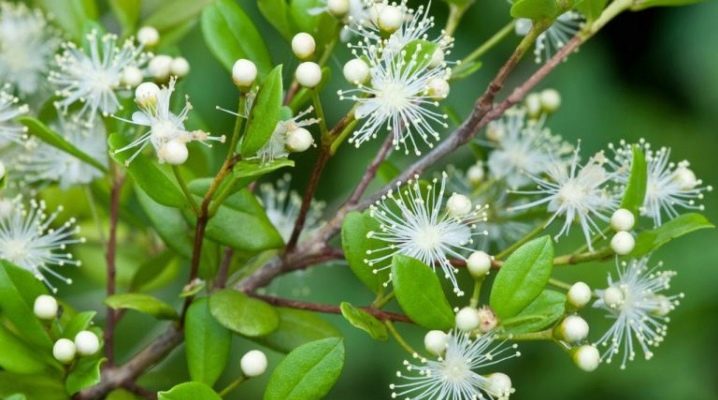
Myrtle is an attractive plant with a pleasant aroma. In many countries, it is considered a symbol of morality and pure love. Due to its beauty and useful properties, this culture has gained great popularity among gardeners and lovers of decorative greenery. Growing a tree at home has its own nuances, but if you look into this issue, any grower will be able to settle such a green "pet".
Peculiarities
Myrtle is an evergreen woody shrub. In the wild, it lives mainly in the subtropics. The stems of the plant are straight, branching. Small leaves are dark green in color. They are quite dense, glossy, have an elongated shape, pointed edges. Numerous foliage glands release essential oil vapors into the air. It is no coincidence that the name of the plant is translated from Greek as "balm".

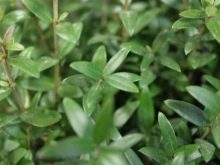
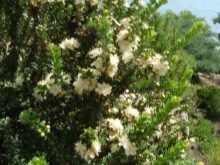
Myrtle looks great indoors and as a separate green decoration, and in the company of other indoor flowers. However, aesthetics are not the only virtue of the tree. Its other characteristics are also highly valued.
The essential oils of the plant contain phytoncides. They can naturally eliminate airborne bacteria. This creates a microclimate that prevents the development of viruses. Also, therapeutic couples increase efficiency, soothe. An infusion of flowers and foliage can be used for skin problems. Dried fruits are used in cooking (they are added as a savory spice). However, the first place for many is still the decorativeness of culture.
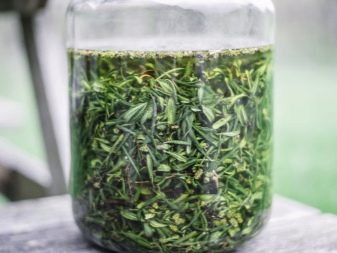
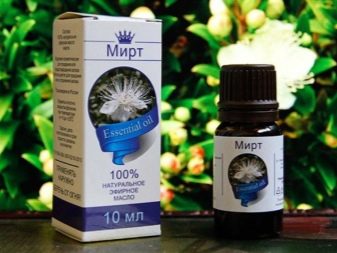

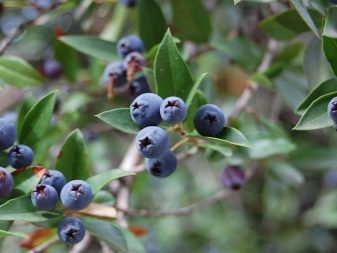
Bloom
Flowers usually appear in early summer and delight with their beauty for a couple of months. However, depending on the cultivar, flowering times may vary. The flowers are beautiful, painted in white or pinkish tones. On a tree, they are located either singly or with brushes. Petals are both regular and double. Flowering is accompanied by a wonderful aroma. The fruits of the culture are edible. They are usually blue or black, although there are other color variations.
In order for the tree to please every year with numerous spectacular flowers, it is necessary to remember some of the nuances. You should not prune the crop in the spring, it is better to prune after flowering. It is also important to regularly ventilate the room so that the myrtle receives a portion of fresh air.
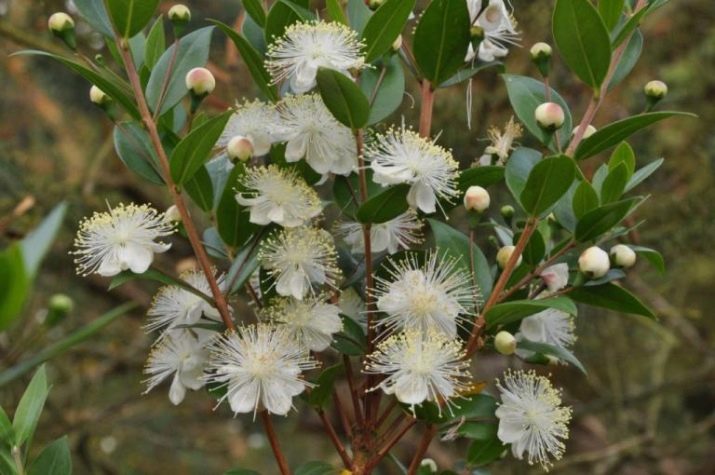

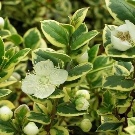
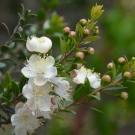

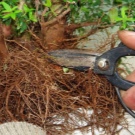
Views
The culture has a huge number of varieties. Each of them has individual characteristics: size, color of flowers and fruits, shape of leaves. Let's consider the most famous types.
Common (Myrtus communis)
This type is also called "communis" ("indoor"). It is the most common variety in home gardening. The culture has a short branched trunk. Its bark is colored reddish-burgundy. The leaves are smooth, glossy, oval in shape. The size of each leaf is about 5 cm.
The plant emits a delicate pleasant aroma. The flowers are usually white (sometimes light pink), solitary, about 2 cm in diameter. The stamens protrude outward. Flowering begins in June. It should be noted that only plants over three years of age bloom. Fruits are dark red, almost black berries. They ripen in October.
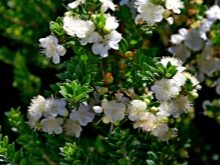
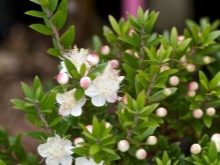
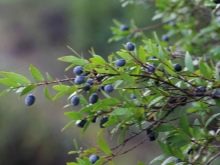
The culture of this species does not differ in winter hardiness.At temperatures below 12 degrees, the plant begins to freeze. The tree loves light shade and diffused light. In nature, it reaches 5 m in height, at home it is rare above 60 cm.
"Variegata"
This is a subspecies of common myrtle. It differs from other varieties in variegated foliage. Large, elongated leaves have an original green and white color. In poor lighting, light spots fade and disappear. The aroma of the tree is not as intense as that of ordinary myrtle.
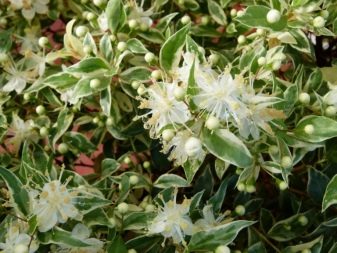
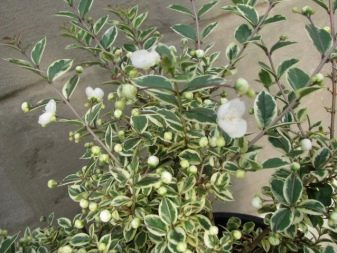
"Luma"
This is a rather tall view. In the wild, it grows up to 25 m. The trunk is branched, has a diameter of about 50 cm. The bark is smooth, grayish-brown. Young branches are covered with a small downy. The leaves are smooth, 5 cm in size, ovoid. The color is deep green.
Numerous snow-white flowers are collected in racemose inflorescences. They appear in October, and flowering continues until January. Then the fruits are formed - berries of a dark purple color. Fruiting ends in March.
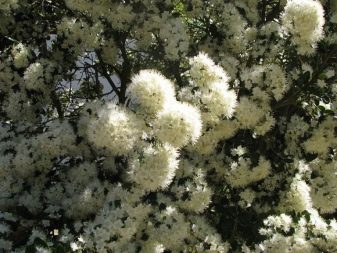
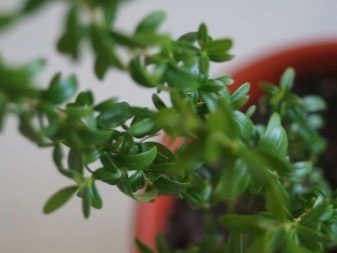
Bonsai
The miniature tree looks very beautiful and unusual. Such a plant is not cheap. The form of culture varies. The trunk can be twisted and curved, and regular pruning allows you to create any kind of crown.
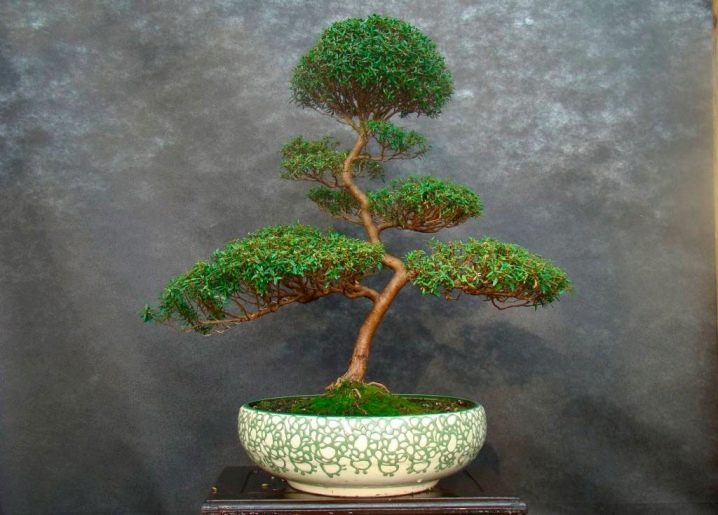
Small-leaved
This graceful variety is also short, making it a success with florists. The maximum height is 60 cm. The crop is covered with numerous small leaves (up to 2 cm), which makes the bush especially attractive.
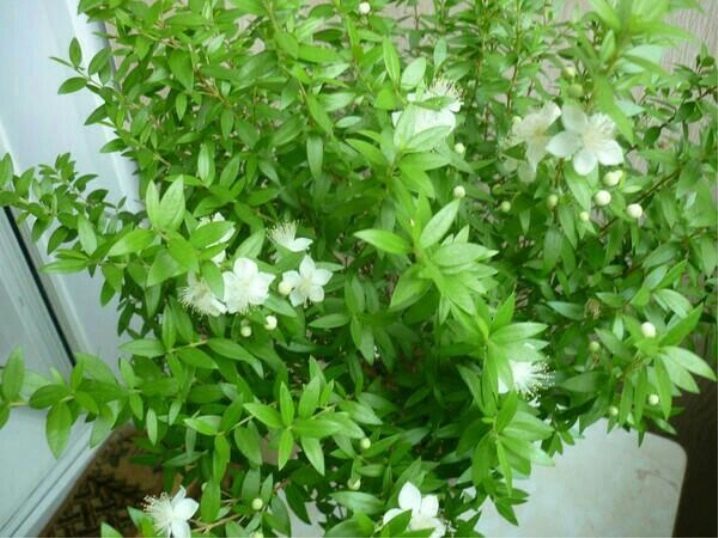
Lush
This species can grow both in the form of a bush and in the form of a tree. The bark is brown. The leaves are dark green, matte. Flowers are traditionally white, delighting with their appearance in the middle or late summer. The fruits are colored burgundy.
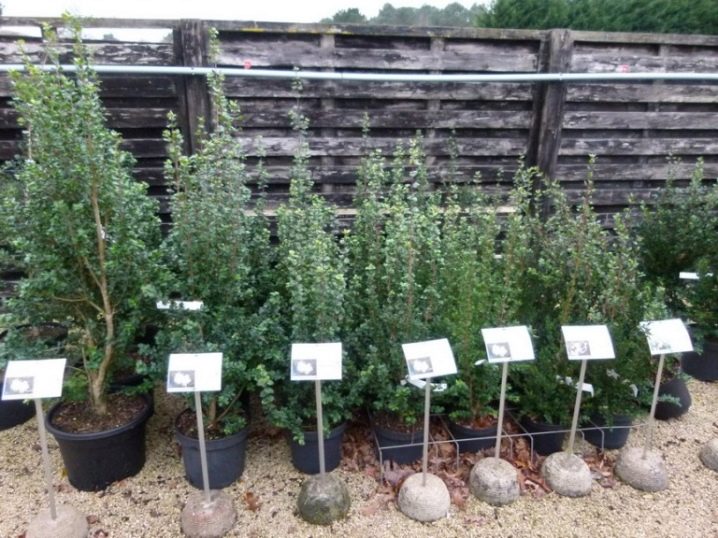
"Boethics"
This variety is distinguished by large leaves. They grow up to 7 cm. The trunk is twisted in the process of cultural development, forming bizarre shapes. The flowers are large, snow-white. The berries are oval, colored black.

Citric
If you crumple a leaf of this type in your hand, you can feel the rich aroma of citrus. In some countries, the foliage of the plant is even used as a condiment. The snow-white flowers gradually darken and become yellowish cream.
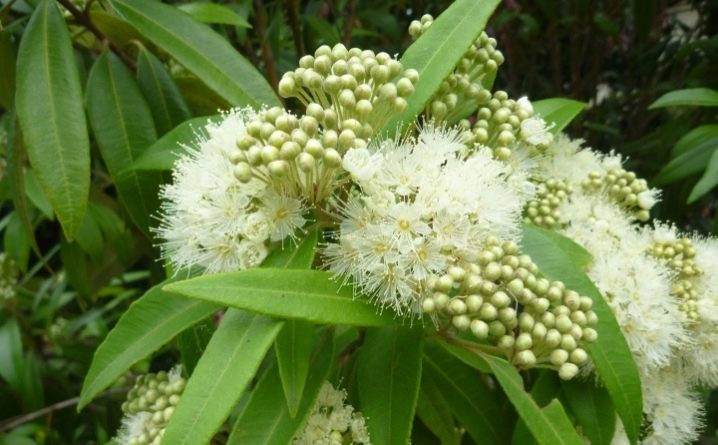
"Alhambra"
This is a tree with high decorative qualities. It stands out among others for its unusual white fruits. The foliage is dense, the flowers are small, white, fragrant.
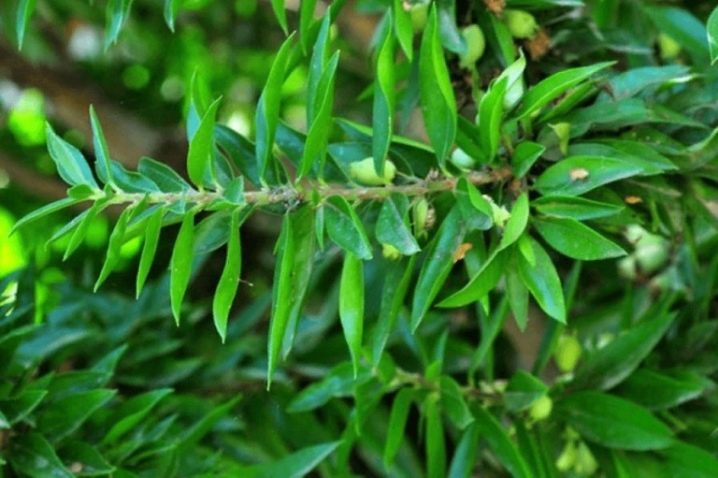
"Ralfa"
The bush is decorated with pinkish flowers with a spectacular light edging. The foliage is glossy, textured. The berries are deep red in color.
The variety of cultural variations is not limited to this, but Myrtus communis remains the most popular among gardeners. It is he who is grown in apartments, offices and country houses.
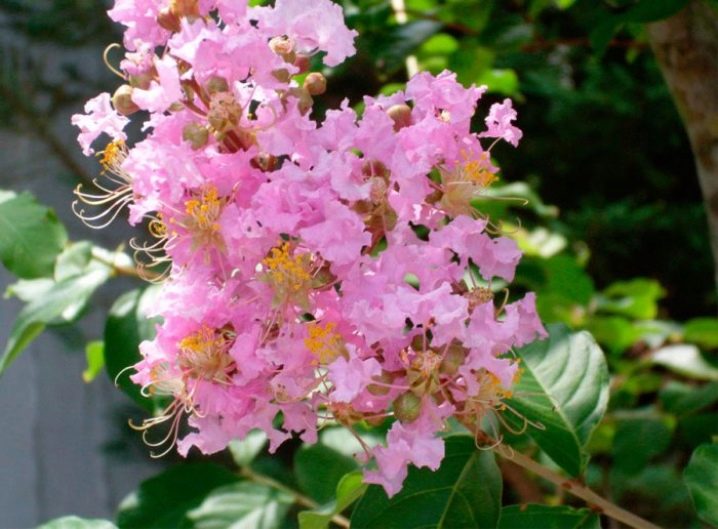
Conditions of detention
Myrth needs a bright light. At the same time, it is better to slightly disperse the sun's rays, especially in the hot season. It is worth remembering that sufficient illumination also affects flowering, because such conditions awaken the culture from sleep.
When growing indoors, the best choice for placing a tree will be a window sill with windows facing east or west. On the south side, leaves can be damaged if curtains are not used. Although the culture is not afraid of drafts, the north will also not be the best choice. Here the flowers will be weak, and the dormant period will drag on for three months instead of one or two.
The change in the location of the myrtle should be gradual. At the new location, the lighting level will change, which will cause a little stress for the plant.
Therefore, first move the pot a little away from the window. After a while, you can move the flower. So it adapts faster to changing conditions.
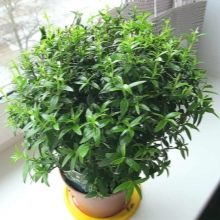
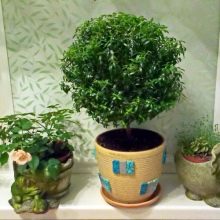
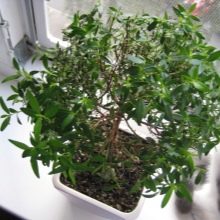
The temperature regime should be moderate. In summer, the range from 18 to 21 degrees is considered favorable. In winter, the tree needs to be kept cool. A temperature of 7-10 degrees above zero would be ideal.
The soil should be brought as close as possible to the soil from the native places of culture. To do this, you need to take in equal shares:
- turf;
- peat;
- sand;
- humus;
- the ground.
A ready-made mixture from a specialty store is also suitable. For additional enrichment of the soil with nutrients, appropriate preparations are used.

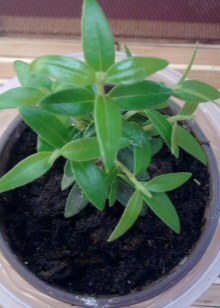
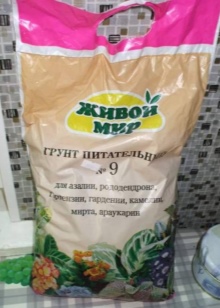
How to care?
Myrtle care depends on the season. As already mentioned, he appreciates fresh air. In this regard, for the summer, the culture can be moved to the balcony or even to the garden. If the plant is in the room, it is necessary to ventilate the room daily. In winter, you need to provide myrtle with soft light and moderate coolness. If the foliage begins to drop, then the flower is hot. The situation is not critical, it is enough to change the location of the tree. As for the lush appearance, it will recover in the spring.
Plant overwintering at room temperature is permissible. However, in this case, abundant soil moisture and frequent spraying are necessary. This will also be required in the summer. Myrtle loves high humidity due to its origin. It will be useful to use special devices that humidify the air.
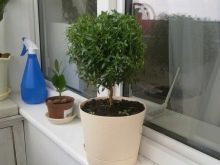
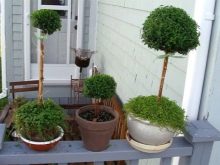

Watering
In the warm season, water the culture regularly, but in moderation. The signal for the procedure is the dryness of the upper layer of the earth. In winter, irrigation should be modest. The main thing is not to let the whole soil dry out. One watering per week is the best solution.
Drying out of the soil leads to yellowing of the foliage and death of the plant. Therefore, if a forgetful florist finds such a problem, the lack of moisture is urgently replenished. At the same time, stagnation of water in the ground is also undesirable. It is important to keep the optimal amount of incoming moisture.
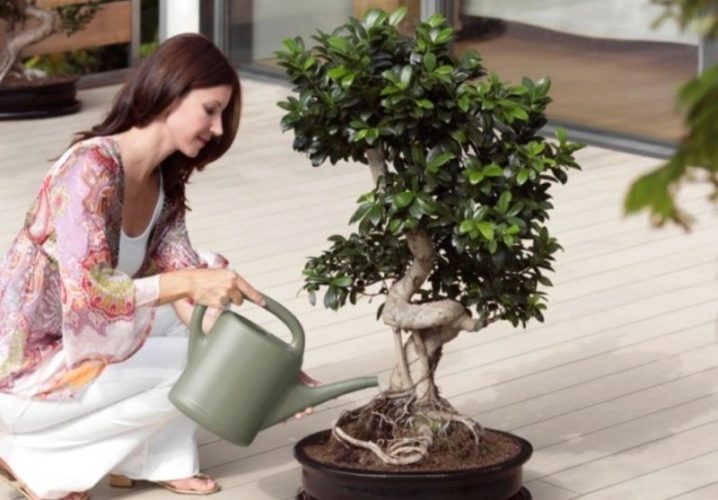
Only good quality water is suitable for irrigation. The tap liquid is defended. Drinking bottled or filtered water is perfect.
Top dressing
To grow a healthy and beautiful plant, you need to remember about feeding. During the period of activity, the myrtle should be fertilized every week. In winter, feeding is carried out 1 time in 4 weeks.
If you want the tree to delight you with abundant flowering, use formulations containing a large proportion of phosphorus. If you want to get a neat miniature culture, opt for nitrogen preparations. It is also permissible to use conventional complex fertilizers for domestic deciduous plants.
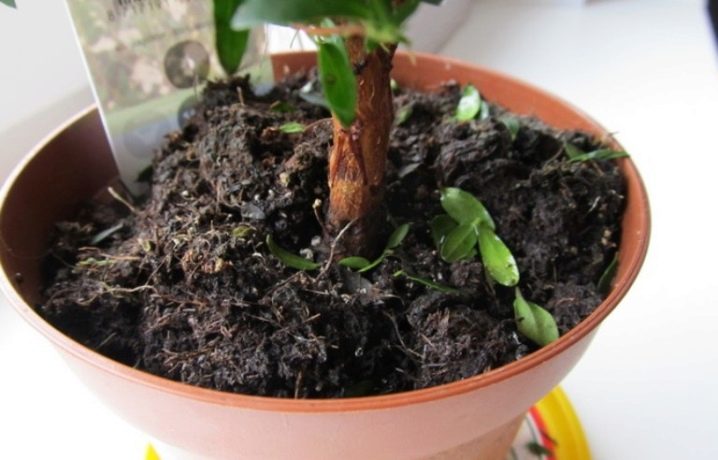
In winter time
In winter, you need to reduce the amount of fertilizing and watering. In addition, it is advisable to observe the temperature regime suitable for the plant. Otherwise, the care remains the same, nothing special needs to be done.
Transfer
After buying a young plant, it will not take long for a florist to think about transplanting. The culture is growing rather slowly. It is necessary to transplant it only if necessary (when the plant becomes cramped in the container). Usually, with adult specimens this happens every 3 years, and with young specimens - once a year. The optimal time for the procedure is winter or early spring.
To make it easy to remove the tree from the pot, watering is not done for a couple of days before. Take out the myrtle carefully, holding it by the trunk. In order for the roots to better take root in a new place, they are treated with a stimulant. The size of the container is chosen based on the size of the plant itself. The width of the container should be half the volume of the crown. An overly wide container will not be good for the culture.
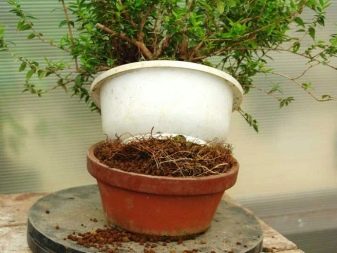
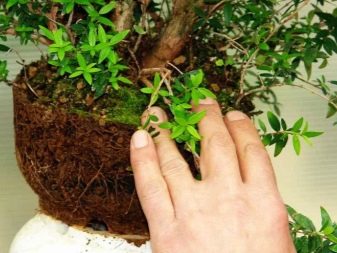
To successfully transplant a green "pet", a drain is placed in a new container, then you need to pour earth into it. After that, the myrtle itself is placed in the pot. Fill in the rest of the soil, level the surface. Sufficient water is provided and planting is complete. The culture is transferred for some time to a darkened place.
Pruning and pinching
Pruning myrtle is easy. He calmly accepts this procedure, so you can give the crown any shape you want. It is undesirable to touch the shoots from the sides, this is due to the low strength of the trunk.
Pruning is carried out in the spring.If the grower timely pinches the young branches, he will be able to help increase the density of the crown. Although do not forget that with frequent such a procedure, the size of the tree decreases. Pinch the culture as needed (in any season).
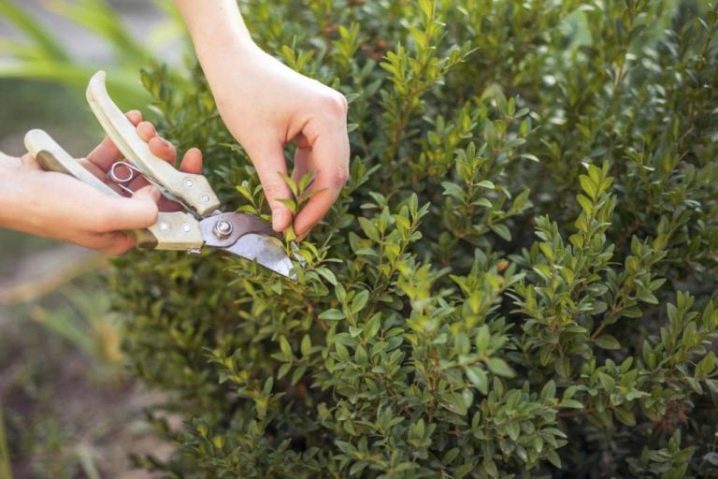
Reproduction
Myrtle can be propagated in 2 ways: cuttings and seeds. For inexperienced lovers of homemade greenery, it is recommended to use the first method.... It is also good because it allows you to preserve maternal traits.
Cuttings
You can propagate the culture by cuttings a maximum of 2 times a year. The best time for this is winter. It is also permissible to hold an event in the spring or in the second summer month. Cuttings are taken from the bottom or from the middle of the plant. The optimal length is 6-9 cm. It is recommended to remove the lower leaves. To root myrtle faster and better, you can use a stimulant.
The stalk should be planted in a suitable mixture, including sand and peat. It is permissible to take ordinary leafy earth and sand. It is recommended to grow planting material at a temperature of 18 to 21 degrees.


Bright light is not needed here. On the contrary, it is better to create a light shadow. In addition, do not take a deep container. After planting, cover the container with transparent material, creating a greenhouse environment. Periodically, a young plant needs to be provided with an influx of fresh air (a mini-greenhouse should be opened).
Usually, rooting takes about a month... The young shoots can then be transferred to the pots. The preferred container diameter is 7 cm. Flowering can be expected in about 3 years.
Seeds
If the florist decides to propagate the culture with seeds, he will have to be patient, since this method is longer. The procedure begins in early spring. In this case, a sand-peat mixture is used.
Seed material is spread over the soil. Then lightly sprinkle it. The container is covered with glass or polyethylene, creating a mini greenhouse. The optimum temperature for growing is from 18 to 21 degrees. Periodically, the shelter is raised to allow the plantings to "breathe" fresh air. The soil should be moderately moist all the time.
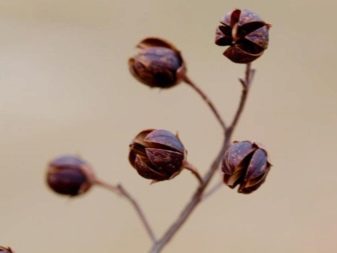

In a couple of weeks, the first changes will be noticeable. After the appearance of four leaves, the seedlings are transferred to individual containers. It is worth using the transshipment method here.
The subsequent care of the young plant is the same as for adult specimens. To form a crown, the sprout must be pinched. When the roots fill the container, the first transplant is carried out. The appearance of flowers will please the culture only after 5 years.
Diseases and pests
If the care of the crop is carried out incorrectly, a florist may face a number of problems:
- if the leaves become dull, turn yellow, curl, then this indicates too bright lighting;
- if the stems stretch up, and the leaves become smaller, it can be concluded that there is a lack of light;
- if foliage falls in winter, this is a sign of dry air (for example, from heating radiators);
- leaves can crumble due to very high temperatures;
- the lack of flowering indicates too frequent pruning or a lack of fresh air (with poor ventilation);
- leaves wither when water stagnates in the soil;
- decay of roots is a sign of poor drainage.

However, don't panic if your green pet is dropping its leaves and wasting away. It is enough to determine the cause of the plant malaise in order to understand what to do. If the myrtle is cold or suffering from heat, the pot should be repositioned. If the tree does not have enough moisture, moderate watering and irrigation of the foliage can revive it.
As for pests, this problem is a little more serious. Myrtle can be attacked by aphids and scale insects. In conditions of excessive dry air, a spider mite can threaten the health of the plant. The scale insect appears on the green part of the culture with dark spots. Aphids prefer the underside of leaves, but a tick can be identified by a thin cobweb.If found, pests are removed with a damp swab. Then the culture is treated with an insecticide.
In conclusion, it should be said that growing this amazing crop can bring a lot of joy to the grower. Beautiful flowers are fragrant, filling the house with a delightful aroma, and the medicinal properties of the plant protect its owners from viruses. The main thing is to pay a little attention to the green "pet" and fulfill the simple requirements for caring for it.
The features of caring for a myrtle tree are described in detail in the video below.

























The comment was sent successfully.